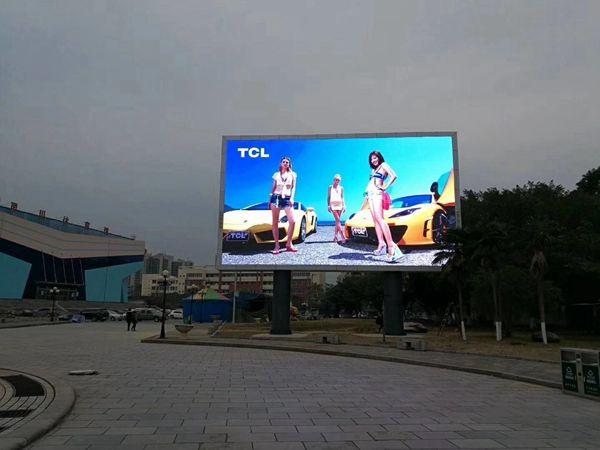industrial news
What details should we pay attention to when buying LED electronic screen
With the rapid development of science and technology, LED electronic screen is widely used in government, military, teaching, finance, industry and commerce, post, securities, transportation, sports, communication, power and other fields. To purchase an excellent LED screen:
1. Flatness
The surface flatness of LED electronic screen should be within 1 mm to ensure that the display picture will not be distorted. Local bulge or concave will cause dead angle in the visual view of LED electronic screen. The quality of flatness is mainly decided by the production process.
2. Brightness and visual viewpoint
The brightness of indoor full-color LED electronic screen should be more than 800cd / m2, and outdoor full-color LED electronic screen should be more than 1500 CD / m2, to ensure the normal operation of the display screen, otherwise, the brightness will be too low to see the pictures displayed. The size of brightness is mainly determined by the quality of LED chip. The size of the visual viewpoint directly determines the number of the audience of the LED electronic screen, so the larger the better. The size of the visual viewpoint is mainly determined by the packaging method of the die.
3. White balance
White balance is one of the most important indicators of LED electronic screen. Only when the share of red, green and blue primary colors is 1:4.6:0.16, can the pure white appear. If the practice share has a little error, it will show the error of white balance. Generally, we should pay attention to whether the White has a blue or yellowish green scene. The quality of white balance is mainly determined by the control system of LED electronic screen, and the chip also has an impact on the color reduction.
4. Reducibility of color
Color reducibility refers to the color reducibility of LED electronic screen, that is, the color displayed on the LED electronic screen should be highly consistent with the color of the broadcasting source, so as to ensure the authenticity of the picture.
5. Are there mosaics and dead spots
Mosaic refers to the small four squares which are usually bright or black on the LED electronic screen, which is the scene of module necrosis. The main reason is that the quality of the connector selected by the LED electronic screen is not up to standard. Dead point refers to a single point which is always bright or black on the LED electronic screen. The number of dead point is mainly determined by the quality of the die.
6. With or without color block
Color block refers to the obvious color difference between adjacent modules. The color transition is based on the module. The color block scene is mainly caused by poor control system, low gray level and low scanning frequency.
7. Rewriting frequency
Rewriting frequency refers to the number of times the LED display screen is repeatedly displayed by the display screen. In theory, the higher the rewriting frequency is, the better the display effect is. Generally speaking, the rewriting frequency of indoor LED electronic screen is greater than 180hz, and that of outdoor LED electronic screen is greater than 300Hz.
8. Gray scale
Gray level is the skill processing level from the darkest to the brightest. The higher the gray level is, the richer the color is, the more beautiful the color is; the more delicate the picture is, the easier it is to reflect rich details. At present, 8-bit processing system, i.e. 256 (28) gray level, is the primary choice for domestic LED electronic screen. In brief, there are 256 brightness changes from black to white. Using RGB three primary colors can form 256 × 256 × 256 = 16777216 colors. It is commonly known as 16 trillion colors. International brand chuangkaiguang( www.ckgled.cn )LED electronic screen mainly uses 10 bit processing system, that is, 1024 gray level, RGB three primary colors can constitute 1.07 billion colors.
Although the gray level is the resolution factor of color number, it does not mean that the larger the limit, the better. Because the first eye resolution is limited, and the improvement of system processing bits will involve the changes of video processing, storage, transmission, scanning and other aspects of the system, resulting in a sharp increase in cost and a decrease in cost performance. Generally speaking, 8-bit system can be used for civil or commercial goods, and 10 bit system can be used for broadcast goods.

